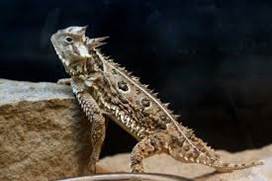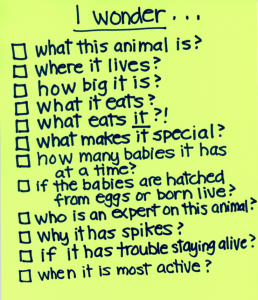 As part of my school visit program, I enjoy doing writing workshops with kids. One of my workshops is called, “Research Is the Writer’s Edge: Finding Evidence, Finding Stories.” This workshop helps students generate a research plan, develop observational skills, practice finding evidence to back up statements that they make, and create a work based on information they have researched. It relates to the many projects they do in their classroom. Here’s how I do it:
As part of my school visit program, I enjoy doing writing workshops with kids. One of my workshops is called, “Research Is the Writer’s Edge: Finding Evidence, Finding Stories.” This workshop helps students generate a research plan, develop observational skills, practice finding evidence to back up statements that they make, and create a work based on information they have researched. It relates to the many projects they do in their classroom. Here’s how I do it:
- I have students make a list of “wonder words” — i.e. “I wonder WHO . . ., I wonder WHAT (etc.)
- Next, I project an image related to research I’m doing or have done and give students a minute to write down as many wonder questions about it as they can. For this, it’s best to use images that they are not familiar with, such as unusual animals or historical scenes with kids in them.
- In the next step, students share their wonder questions either in small groups or with the whole class. A recorder writes the wonder question on the board or chart paper.

- In the discussion that follows, I have students try to answer wonder questions using the image itself, So, if the question were, “I wonder where it lives?” they use clues in the image to make an educated guess.
- When students make a guess about the image, I always, say, “What do you see that makes you say that?” Students soon figure out that a question such as, “I wonder what the animal is thinking” is not answerable, but could be explored in fiction.
- The session ends by giving students a chance to turn the information they’ve gathered into a short work to share in small groups.
- The follow-up would be to encourage students find answers to their own questions generated in the class.
The overarching “lesson” is that all writing begins with information gleaned from research. And information can come from personal experiences (what a wooden floor looks like vs a carpeted floor) or from outside sources (interviews, books, primary sources, art, etc.) Also, once you know something about an animal, person object or event, you can use that information to create a nonfiction article, a fictional story, a poem and more.
Because my published books are fiction, it surprises kids to find out that I’ve also written nonfiction for magazines. My research always begins with wondering — and chasing down answers to my own questions is fun. . My goal is to help students catch the research bug!
What kind of writing workshop do you do?
